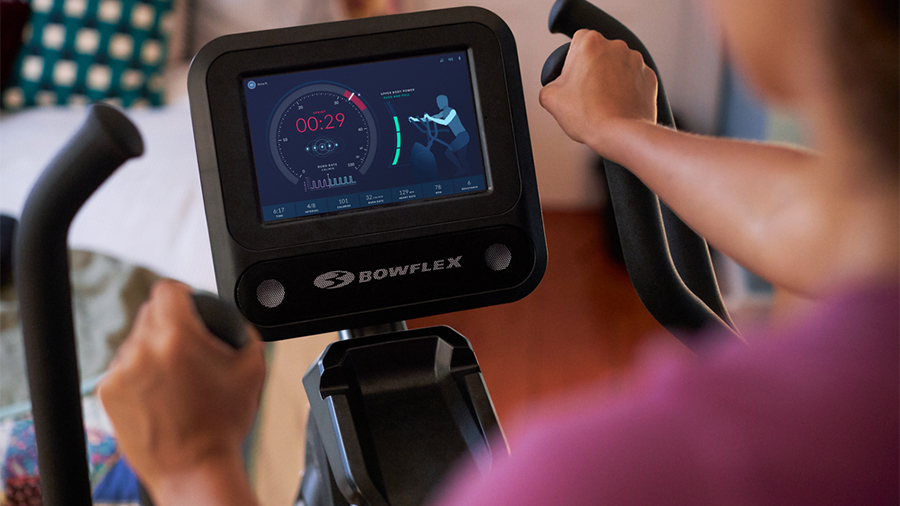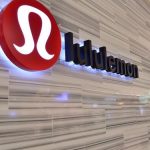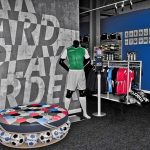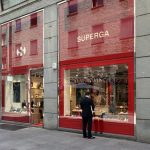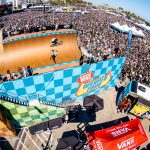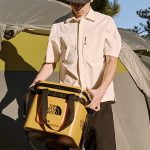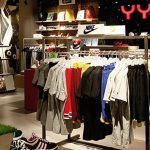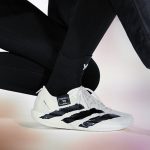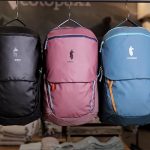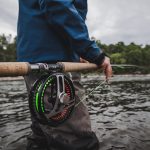Nautilus Inc. CEO Jim Barr remained upbeat on a recent quarterly conference call with analysts, indicating that sales in the second quarter ended September 30 remained strongly above pre-pandemic levels and membership growth in its digital fitness platform, JRNY, attests to the long-term opportunity of at-home fitness. But the realities of the post-pandemic landscape for at-home fitness brands hit home as the company reported that quarterly sales were significantly down year-over-year due to tough comparisons, pushing NLS to lower guidance for the year due to tighter inventory controls from retailers.
“Retailers remain cautious about inventory levels across many categories, including home fitness,” said Barr. “We are tracking and assisting in the de-stocking of existing retail inventories as they sell through. And while we are seeing re-orders from some retailers, others still have additional stock to sell before being comfortable in placing significant reorders.”
Barr highlighted progress that Nautilus is seeing, including seeing sequential improvement in adjusted EBITDA sequentially due to improving gross margins versus the first quarter and effective expense management. The company reduced its quarterly loss in half sequentially and remains on its goal of breakeven results in the back half of the year.
The JRNY digital fitness platform also reached approximately 400,000 members as of September 30, representing approximately 116 percent growth versus the comparable quarter-end last year.
Barr also expressed confidence in the at-home fitness opportunity despite disruption in the near-term as consumers’ long-term habits have shifted and solidified in the past two-plus years in favor of home fitness.
“At-home fitness, like many other consumer focused industries, is undergoing short term macroeconomic challenges, but the long term profitable growth opportunity for our company remains intact,” said Barr. “Our research shows that consumers, particularly our recently-defined high-value target segments, are sticking with home workouts, even as they tighten their belts and watch their budgets.”
NLS noted that60 percent of U.S. adults recently surveyed say they consistently worked out at home, up from 43 percent who reported the same at the beginning of 2020. Among Nautilus’ high-value target segments, nearly 90 percent are working out at home. Barr said, “This is a long-term seismic shift and Nautilus is well-positioned to take advantage of this opportunity.”
In the second quarter, sales declined 52.6 percent to $65.5 million year-over-year. Sales were up 24 percent, or on a 7 percent CAGR (compound annual growth rate) basis, when compared to the comparable period in 2020, excluding sales related to the since-divested Octane brand. The decline versus last year was driven primarily by the return to pre-pandemic seasonal demand and pre-pandemic sales discounting practices, as its typical sales discounts.
Gross margins eroded 13 full percentage points to 17.5 percent of sales from 30.5 percent last year. The decline was due primarily to increased discounting (-4 percentage points), unfavorable logistics overhead absorption (-4 percentage points), increased investments in JRNY (-3 percentage points), a prior-year release of a special warranty reserve (-2 percentage points), and an increase in inventory adjustments (-2 percentage points), partially offset by an improvement in other costs (+2 percentage points).
Operating expenses were down 41.4 percent to $25.8 million. The $18.2 million decrease was said to be primarily due to $9.3 million lower media spending, a $4.7 million prior-year loss contingency related to a legal settlement, a decrease of $3.0 million due to other cost savings, and a $2.7 million decrease in other variable selling and marketing expenses due to decreased sales, offset by a $1.5 million increase in JRNY investments. Total advertising expenses were $3.1 million versus $12.4 million last year.
The operating loss was $14.3 million, or a negative 21.8 percent operating margin, compared to an operating loss of $2.0 million last year, primarily driven by lower gross profit. The net loss from continuing operations was $15.3 million, or 48 cents per share, compared to a loss of $4.6 million, or 15 cents per share, last year. The net loss in the latest quarter was $13.2 million, or 41 cents a share.
Direct Segment Decline 35 Percent
By channel, Direct segment sales were $24.5 million in the quarter, a decline of 35.3 percent versus last year, and up 51.1 percent, or 15 percent CAGR, compared to the same period in fiscal 2020. The net sales decrease compared to last year was primarily driven by the return to pre-pandemic seasonal demand and discounting practices.
Cardio sales declined 26.4 percent versus last year and were up 32.7 percent, or 10 percent CAGR, compared to the comp period in fiscal 2020. Lower sales in the most recent quarter were primarily driven by lower bike demand. Strength product sales fell 48.3 percent versus last year and increased 112.1 percent, or 28 percent CAGR, compared to the comparable period in fiscal 2020. Lower sales in the quarter were primarily driven by lower demand for SelectTech weights.
As of September 30, the Direct segment’s backlog totaled $300,000. This amount represents unfulfilled consumer orders net of current promotional programs and sales discounts.
Gross margins in the Direct segment were 12.7 percent versus 36.9 percent last year. The 24.2 percentage-point decrease in gross margin was primarily driven by: increased discounting (-7 percentage points), increased investments in JRNY (-5 percentage points), a prior-year release of a special warranty reserve (-4 percentage points), unfavorable logistics overhead absorption (-4 percentage points), and increases in other costs (-4 percentage points). Gross profit was $3.1 million, a decrease of 77.8 percent versus last year.
Segment contribution loss was $7.9 million, or 32.2 percent of sales, in fiscal Q2, compared to segment contribution loss of $1.8 million, or 4.8 percent, last year. The decline was primarily driven by lower gross profit, offset by decreased media spend. DTC advertising expenses were $2.6 million compared to $6.8 million for the year-ago period.
Retail Segment Sales Drop 60 Percent
Retail segment sales were $39.9 million, a decline of 59.8 percent versus fiscal Q2 last year, and up 10.6 percent, or 3 percent CAGR, compared to the comp period in fiscal 2020, excluding sales related to the Octane brand. Retail segment sales outside the U.S. and Canada were down 80.0 percent versus last year. The net sales decrease compared to Q2 last year was primarily driven by lower Cardio sales as retailers work through higher-than-normal inventory levels.
Cardio sales at retail declined 75.3 percent versus fiscal Q2 last year, and were down 45.7 percent, or 18 percent CAGR, compared to the comp period in fiscal 2020, excluding sales related to the Octane brand. Lower sales in the 2022 fiscal Q2 period quarter were primarily driven by lower bike demand. Strength product sales declined 37.1 percent versus Q2 last year and increased 172.2 percent, or 40 percent CAGR, compared to the comp period in fiscal 2020. Lower sales in the most recent quarter were primarily driven by lower demand for SelectTech weights.
The Retail segment’s backlog totaled $32.6 million at quarter-end. This amount was said to represent customer orders for future shipments and are net of contractual rebates and consideration payable to applicable Retail customers.
Gross margins were 18.3 percent of sales in fiscal Q2 versus 27.4 percent in Q2 last year. The 9.1 percentage points decrease in gross margin was primarily driven by an increase in inventory adjustment (-4 percentage points), increased discounting (-3 percentage points) and unfavorable logistics overhead absorption (-3 percentage points), partially offset by improvements in other costs (+1 percentage points). Gross profit was $7.3 million, a decrease of 73 percent versus Q2 last year.
Retail Segment contribution loss was $1.0 million, or 2.4 percent of sales, compared to segment contribution income of $18.7 million, or 18.9 percent of sales, last year.
Company-wide inventory was $99.2 million at quarter-end, down 11 percent compared to $111.2 million as of March 31, 2022 and down 39 percent versus the comparable quarter last year. The year-over-year decrease in inventory was driven by sell-through and strong inventory management as the company continued to right-size inventory levels.
Updated Guidance
For the second half and full year 2023, Nautilus now expects:
- Full-year revenue between $315 million and $365 million compared to the previous range of $380 million to $460 million. The decline in revenue is primarily due to lower expectations in the Retail segment.
- Gross margins for the second half of the year to be in the range of 24 percent to 27 percent, compared to the previous range of 27 percent to 30 percent. The decline is primarily due to the lower revenue and the resulting loss of expense leverage of fixed costs.
- The sequential improvement in gross margins is still expected versus the first half, driven by lower inbound freight, the elimination of detention and demurrage fees, and the reduction in logistics facilities’ footprint. The company closed one of its distribution centers at lease expiration in October 2022 and will not be renewing the leases of some storage locations in-line with the progress made to right-size inventory levels.
- The company remains focused on achieving break-even adjusted EBITDA for the second half of fiscal 2023 to minimize cash consumption and begin the return to profitability. However, given the wide range of revenue expectations driven by the current macro-economic environment, the company is now guiding to full-year adjusted EBITDA loss to be between $30 million and $40 million compared to the prior range of adjusted EBITDA loss of between $25 million and $35 million.
- The company continues to expect JRNY Members to exceed 500,000 at March 31, 2023.
Photo courtesy Nautilus

